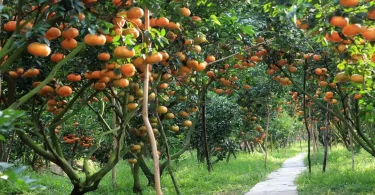The ZZ plant (Zamioculcas zamiifolia), known for its glossy, dark green leaves and low-maintenance nature, is a favorite among houseplant enthusiasts. To keep your ZZ plant thriving, choosing the right soil is crucial. This guide explores the best soil for ZZ plant, why they matter, and how to create an ideal environment for growth.
Why Soil Matters for ZZ Plants
ZZ plants are native to arid regions of eastern Africa, where they grow in well-draining, sandy soils. Their thick, tuberous rhizomes store water, making them drought-tolerant but sensitive to overwatering. Poor soil can lead to root rot, stunted growth, or nutrient deficiencies. The best soil for a ZZ plant promotes drainage, retains just enough moisture, and provides adequate aeration.
Characteristics of the Best Soil for ZZ Plants
The ideal soil mix for ZZ plants should have these key traits:
Nutrient-Rich (Optional): While ZZ plants don’t need heavy feeding, some nutrients support long-term health.
Well-Draining: Prevents water from pooling around roots, reducing the risk of rot.
Light and Airy: Allows oxygen to reach the roots, supporting healthy growth.
Slightly Moisture-Retentive: Holds enough water for the plant without staying soggy.
Top Soil Options for ZZ Plants
Here are the best soil mixes and components for your ZZ plant:
1. Cactus or Succulent Potting Mix
- Why It Works: Cactus and succulent mixes are designed for plants that prefer dry conditions, making them a great base for ZZ plants. These mixes typically contain sand, perlite, and peat moss for excellent drainage and aeration.
- How to Use: Use straight from the bag or enhance with additional perlite or pumice for extra drainage.
- Recommended Brands: Miracle-Gro Cactus, Palm & Citrus Potting Mix or Espoma Organic Cactus Mix.
2. DIY ZZ Plant Soil Mix
- Ingredients:
- 50% potting soil (peat-based or coconut coir-based)
- 30% perlite or pumice (for drainage and aeration)
- 20% coarse sand or small gravel (to mimic natural habitat)
- Why It Works: This custom mix balances moisture retention with fast drainage, ideal for ZZ plants. Coconut coir is a sustainable alternative to peat moss and works just as well.
- How to Mix: Combine ingredients thoroughly in a large container. Ensure the mix feels loose and crumbly, not dense or clumpy.
3. All-Purpose Potting Soil with Amendments
Tip: Check that the potting soil doesn’t contain water-retaining crystals, as these can harm ZZ plants.
Why It Works: A standard potting soil can work if amended to improve drainage. ZZ plants don’t need overly rich soil, so a basic mix with added drainage materials is sufficient.
How to Use: Mix 2 parts all-purpose potting soil with 1 part perlite and 1 part coarse sand. Avoid soils labeled as “moisture-retaining” for ZZ plants.
Additional Tips for ZZ Plant Soil and Care
Fertilizing: Use a diluted, balanced liquid fertilizer (e.g., 10-10-10) once every 2–3 months during the growing season. Avoid over-fertilizing, as ZZ plants are light feeders.
Pot Choice: Use a pot with drainage holes to prevent water buildup. Terracotta pots are ideal as they wick away excess moisture.
Repotting: Repot every 1–2 years or when the plant becomes root-bound. Refresh the soil to maintain drainage and nutrient levels.
Watering: Water sparingly, allowing the soil to dry out completely between waterings. Overwatering is the leading cause of ZZ plant issues.
pH Level: ZZ plants prefer slightly acidic to neutral soil (pH 6.0–7.0). Most commercial potting mixes fall within this range.
Where to Buy Soil for ZZ Plants
You can find quality soil mixes at:
- Local Garden Centers: Look for cactus or succulent mixes.
- Online Retailers: Amazon, Etsy, or Home Depot carry trusted brands like Miracle-Gro, Espoma, or Bonsai Jack.
- Specialty Nurseries: Some offer pre-mixed soils tailored for ZZ plants.
Conclusion
Choosing the best soil for your ZZ plant is the foundation of its long-term health. Opt for a well-draining mix like a cactus potting soil or create your own with potting soil, perlite, and sand. With the right soil and minimal care, your ZZ plant will thrive, adding lush greenery to your space for years to come.



